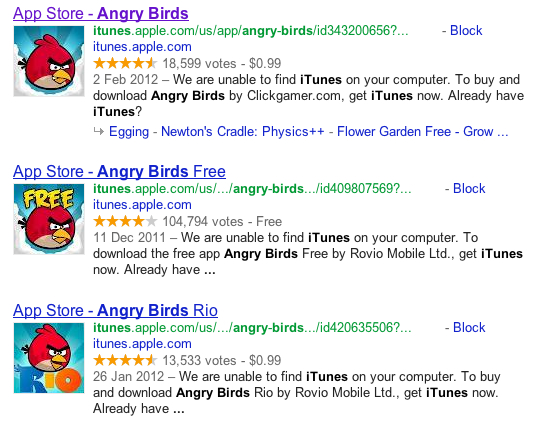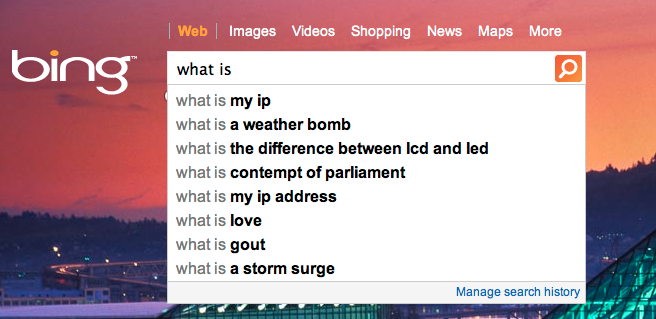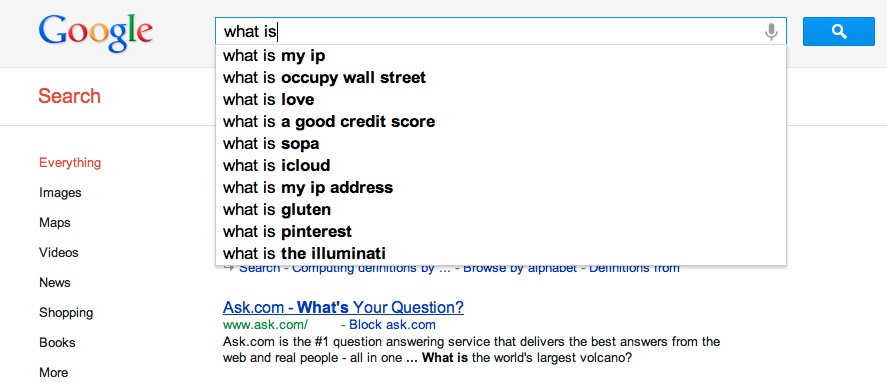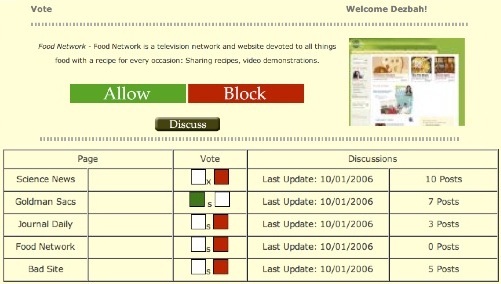[Original Journal Article]
Chun Wei Choo, Brian Detlor and Don Turnbull
Keywords
world wide web, information seeking, information retrieval, browsing, web browser, searching, finding, behavioral model, user behavior, log analysis, quantitative, qualitative
Cite As
Chun Wei Choo, Brian Detlor and Don Turnbull (2000) Information Seeking on the Web: An Integrated Model of Browsing and Searching. First Monday, volume 5, number 2 (February 2000).
Abstract
This paper presents findings from a study of how knowledge workers use the Web to seek external information as part of their daily work. Thirty-four users from seven companies took part in the study. Participants were mainly IT specialists, managers, and research/marketing/consulting staff working in organizations that included a large utility company, a major bank, and a consulting firm. Participants answered a detailed questionnaire and were interviewed individually in order to understand their information needs and information seeking preferences. A custom-developed WebTracker software application was installed on each of their work place PCs, and participants’ Web-use activities were then recorded continuously during two-week periods. The WebTracker recorded how participants used the browser to seek information on the Web: it logged menu choices, button bar selections, and keystroke actions, allowing browsing and searching sequences to be reconstructed. In a second round of personal interviews, participants recalled critical incidents of using information from the Web.
Data from the two interviews and the WebTracker logs constituted the database for analysis. Sixty-one significant episodes of information seeking were identified. A model was developed to describe the common repertoires of information seeking that were observed. On one axis of the model, episodes were plotted according to the four scanning modes identified by Aguilar (1967), Weick and Daft (1983): undirected viewing, conditioned viewing, informal search, and formal search. Each mode is characterized by its own information needs and information seeking strategies. On the other axis of the model, episodes were plotted according to the occurrence of one or more of the six categories of information seeking behaviors identified by Ellis (1989, 1990): starting, chaining, browsing, differentiating, monitoring, and extracting. The study suggests that a behavioral framework that relates motivations (Aguilar) and moves (Ellis) may be helpful in analyzing patterns of Web-based information seeking.
Excerpt
Towards a Behavioral Model of Information Seeking on the Web
Aguilar’s modes of scanning and Ellis’ seeking behaviors may be combined and extended in a new behavioral model of information seeking on the Web. The figure below identifies four main modes of information seeking on the Web: undirected viewing, conditioned viewing, informal search, and formal search. For each mode, the figure indicates which information seeking activities or moves are likely to occur frequently, as suggested by theory.
Figure 3: Behavioral Modes and Moves of Information Seeking on the Web
|
Starting |
Chaining |
Browsing |
Differentiating |
Monitoring |
Extracting |
| Undirected Viewing |
Identifying, selecting, starting pages and sites |
Following links on initial pages |
|
|
|
|
| Conditioned Viewing |
|
|
Browsing entry pages, headings, site maps |
Bookmarking, printing, copying;
Going directly to known site |
Revisiting ‘favorite’ or bookmarked sites for new information |
|
| Informal Search |
|
|
|
Bookmarking, printing, copying;
Going directly to known site |
Revisiting ‘favorite’ or bookmarked sites for new information |
Using (local) search engines to extract information |
| Formal Search |
|
|
|
|
Revisiting ‘favorite’ or bookmarked sites for new information |
Using search engines to extract information |
Undirected Viewing
In the undirected viewing mode on the Web, we expect to see many instances of starting and chaining. Starting occurs when viewers begin their Web use on pre-selected default home pages, or when they visit a favorite page or site to begin their viewing (such as news, newspaper, or magazine sites). Chaining occurs when viewers notice items of interest (often by chance), and then follow hypertext links to more information on those items. Forward chaining of the sort just described is the most typical during undirected viewing. Backward chaining is also possible, since search engines can be used to locate other Web pages that point to the site that the user is currently at.
Conditioned Viewing
In the conditioned viewing mode on the Web, we expect browsing, differentiating, and monitoring to be common. Differentiating occurs as viewers select Web sites or pages that they expect to provide relevant information. Sites may be differentiated based on prior personal visits, or recommendations by others (such as word-of-mouth or published reviews). Differentiated sites are often bookmarked. When visiting differentiated sites, viewers browse the content by looking through tables of contents, site maps, or list of items and categories. Viewers may also monitor highly differentiated sites by returning regularly to browse, or by keeping abreast of new content (through, for example subscribing to newsletters that report new material on the site).
Informal Search
During informal search on the Web, we expect differentiating, extracting, and monitoring to be typical. Again, informal search is likely to be attempted at a small number of Web sites that have been differentiated by the individual, based on the individual’s knowledge about these sites’ information relevance, quality, affiliation, dependability, and so on. Extracting is relatively “informal” in the sense that searching would be localized to looking for information within the selected site(s). Extracting is also likely to make use of the basic, ‘simple’ search features or commands of the local search engine, in order to get at the most important or most recent information, without attempting to be comprehensive. Monitoring becomes more proactive if the individual sets up push channels or software agents that automatically find and deliver information based on keywords or subject headings.
Formal Search
During formal search on the Web, we expect primarily extracting operations, with some complementary monitoring activity. Formal search makes use of search engines that cover the Web relatively comprehensively, and that provide a powerful set of search features that can focus retrieval. Because the individual wishes not to miss any important information, there is a willingness to spend more time in the search, to learn and use complex search features, and to evaluate the sources that are found in terms of quality or accuracy. Formal search may be two-staged: multi-site searching that identifies significant sources is then followed by within-site searching. Within-site searching may involve fairly intensive foraging. Extracting may be supported by monitoring activity, again through services such as Web site alerts, push channels/agents, and e-mail announcements, in order to keep up with late-breaking information.
References in this publication
- Francis J. Aguilar, 1967. Scanning the Business Environment. New York: Macmillan.
- Francis J. Aguilar, 1988. General Managers in Action. New York: Oxford University Press.
- L.D. Catledge and J. E. Pitkow, 1995. “Characterizing Browsing Strategies in the World Wide Web”. World Wide Web Conference.
- Shan-Ju Chang and Ronald E. Rice, 1993. “Browsing: A Multidimensional Framework,” In: Martha E. Williams (editor). Annual Review of Information Science and Technology. Medford, N.J.: Learned Information.
- Chun Wei Choo, 1998. Information Management for the Intelligent Organization: The Art of Scanning the Environment. Second edition. Medford, N.J.: Information Today.
- Chun Wei Choo, Brian Detlor, and Don Turnbull, 1998. “A Behavioral Model of Information Seeking on the Web: Preliminary Results of a Study of How Managers and IT Specialists Use the Web,” In: Proceedingsof 61st ASIS Annual Meeting held in Pittsburgh, Pa., edited by Cecilia M. Preston, volume 35, pp. 290-302. Medford, N.J.: Information Today.
- Richard L. Daft and Karl E. Weick, 1984. “Toward a Model of Organizations as Interpretation Systems,” Academy of Management Review,volume 9, number 2, pp. 284-295.
- David Ellis and Merete Haugan, 1997. “Modelling the Information Seeking Patterns of Engineers and Research Scientists in an Industrial Environment,” Journal of Documentation,volume 53, number 4, pp. 384-403.
- David Ellis, D. Cox, and K. Hall, 1993. “A Comparison of the Information Seeking Patterns of Researchers in the Physical and Social Sciences,” Journal of Documentation,volume 49, number 4, pp. 356-369.
- David Ellis, 1989. “A Behavioural Model for Information Retrieval System Design,” Journal of Information Science, volume 15, numbers 4/5, pp. 237-247.
- John C. Flanagan, 1954. “The Critical Incident Technique,” Psychological Bulletin, volume 51, number 4, pp. 327-358.
- Bernardo A. Huberman, Peter L. Pirolli, James E. Pitkow, and Rajan M. Lukose, 1998. “Strong Regularities in World Wide Web Surfing,” Science,volume 280, number 5360, pp. 94-97.
- Gary M. Marchionini, 1995. Information Seeking in Electronic Environments.Cambridge, Eng.: Cambridge University Press.
- Linda Tauscher and Saul Greenberg, 1997. “How People Revisit Web Pages: Empirical Findings and Implications for the Design of History Systems,” International Journal of Human-Computer Studies, volume 47, pp. 97-137.
- Linda Tauscher and Saul Greenberg, 1997. “Revisitation Patterns in World Wide Web Navigation,” In: Proceedingsof CHI 97 Human Factors in Computing Systems held in Atlanta, Georgia, edited by Steven Pemberton, pp. 399-406.
- Karl E. Weick and Richard L. Daft, 1983. “The Effectiveness of Interpretation Systems,” In: Organizational Effectiveness: A Comparison of Multiple Models,edited by Kim S. Cameron and David A. Whetten, pp. 71-93. New York: Academic Press.
- T. D. Wilson, 1997. “Information Behaviour: An Interdisciplinary Perspective,” Information Processing & Management, volume 33, number 4, pp. 551-572.
Publications that cite this publication
Google Scholar Citations
Related Articles




